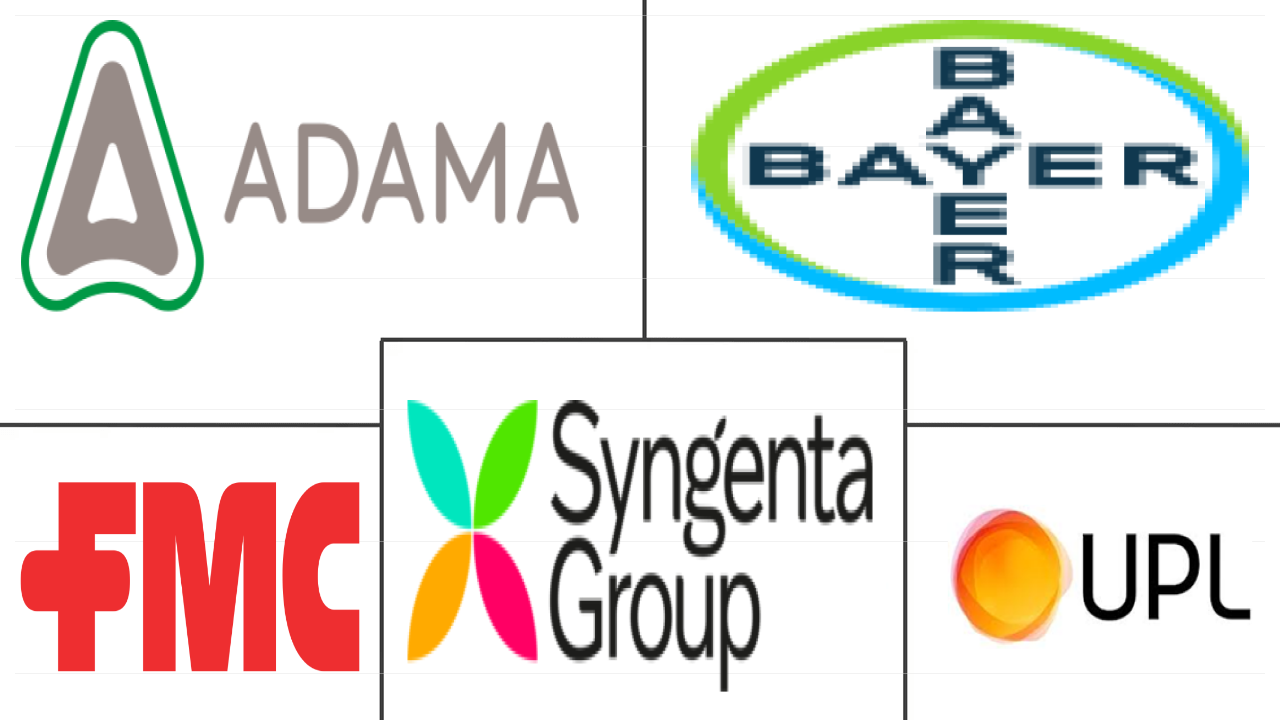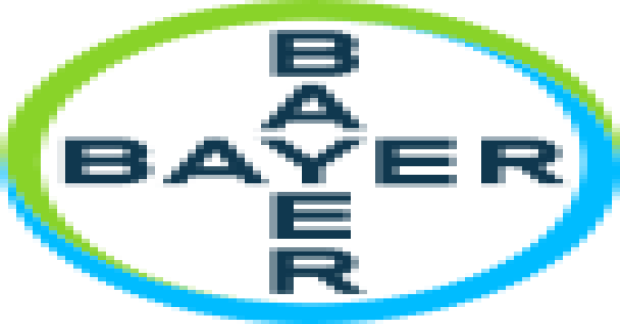Market Size of indonesia fungicide Industry
| Icons | Lable | Value |
|---|---|---|
|
|
Study Period | 2017 - 2029 |
|
|
Market Size (2024) | USD 542.1 Million |
|
|
Market Size (2029) | USD 647.6 Million |
|
|
Largest Share by Application Mode | Foliar |
|
|
CAGR (2024 - 2029) | 3.62 % |
|
|
Fastest Growing by Application Mode | Foliar |
|
|
Market Concentration | Low |
Major Players |
||

|
||
|
*Disclaimer: Major Players sorted in no particular order |
Indonesia Fungicide Market Analysis
The Indonesia Fungicide Market size is estimated at 542.1 million USD in 2024, and is expected to reach 647.6 million USD by 2029, growing at a CAGR of 3.62% during the forecast period (2024-2029).
542.1 Million
Market Size in 2024 (USD)
647.6 Million
Market Size in 2029 (USD)
1.75 %
CAGR (2017-2023)
3.62 %
CAGR (2024-2029)
Largest Segment by Application Mode
61.24 %
value share, Foliar, 2023
Farmers can efficiently manage fungal infections, safeguarding crop health and productivity, through foliar application, which shows quick action by targeting the infected area.
Largest Segment by Crop Type
46.49 %
value share, Pulses & Oilseeds, 2023
The use of fungicides plays a critical role in mitigating the risks posed by fungal diseases, safeguarding the productivity and quality of pulses and oilseed crops.
Fastest-Growing Segment by Crop Type
3.78 %
Projected CAGR, Pulses & Oilseeds, 2024-2029
The use of fungicides plays a critical role in mitigating the risks posed by fungal diseases, safeguarding the productivity and quality of pulses and oilseed crops.
Leading Market Player 1
0.61 %
market share, Bayer AG, 2022

Bayer partnered with Oerth Bio with the aim of developing next-generation crop protection products based on Oerth Bio's innovative protein degradation technology.
Leading Market Player 2
0.44 %
market share, Syngenta Group, 2022

Syngenta Group introduced TYMIRIUM technology, an active ingredient for seed treatment, which is designed for both soil and seed-applied applications.
Growing fungal diseases damages major crops, like palm oil, coffee, rice, and maize, increasing the fungicide adoption rate
- Indonesia's tropical climate provides an ideal environment for crop cultivation and the rapid proliferation of fungal diseases, posing significant challenges to the agricultural sector. In response, farmers in the country are employing various methods to combat these fungal diseases, with fungicides being an effective solution. Depending on the specific disease and crop stage, farmers are implementing different application modes to control and mitigate the impact of these diseases.
- Farmers predominantly adopted the foliar application method, which represented a significant market share of 61.2% in 2022. This preference can be attributed to effective disease control and additional benefits to plant health, including improved growth efficiency and stress tolerance, resulting in enhanced productivity throughout the growing season.
- Seed treatment fungicides are suitable to combat soil-borne diseases in crops like palm oil, coffee, rice, and maize. This proactive approach enables growers to effectively control diseases at the early crop stage, mitigating their impact on crop health and yield. In 2022, the consumption of seed treatment fungicides represented a share of 13.7%.
- The chemigation application mode occupied the market value share of 12.2% in 2022, which is majorly attributed to the country's top priority on modernizing the irrigation systems, and 95% of the country's rice is produced from these irrigation systems. The rising adoption of modern irrigation systems further increases the adoption of chemigation modes for applying fungicides.
- Farmers utilize other fumigation and soil treatment as alternative modes of applying fungicides to their crops, selecting the appropriate method based on the specific fungal disease and crop type.
Indonesia Fungicide Industry Segmentation
Chemigation, Foliar, Fumigation, Seed Treatment, Soil Treatment are covered as segments by Application Mode. Commercial Crops, Fruits & Vegetables, Grains & Cereals, Pulses & Oilseeds, Turf & Ornamental are covered as segments by Crop Type.
- Indonesia's tropical climate provides an ideal environment for crop cultivation and the rapid proliferation of fungal diseases, posing significant challenges to the agricultural sector. In response, farmers in the country are employing various methods to combat these fungal diseases, with fungicides being an effective solution. Depending on the specific disease and crop stage, farmers are implementing different application modes to control and mitigate the impact of these diseases.
- Farmers predominantly adopted the foliar application method, which represented a significant market share of 61.2% in 2022. This preference can be attributed to effective disease control and additional benefits to plant health, including improved growth efficiency and stress tolerance, resulting in enhanced productivity throughout the growing season.
- Seed treatment fungicides are suitable to combat soil-borne diseases in crops like palm oil, coffee, rice, and maize. This proactive approach enables growers to effectively control diseases at the early crop stage, mitigating their impact on crop health and yield. In 2022, the consumption of seed treatment fungicides represented a share of 13.7%.
- The chemigation application mode occupied the market value share of 12.2% in 2022, which is majorly attributed to the country's top priority on modernizing the irrigation systems, and 95% of the country's rice is produced from these irrigation systems. The rising adoption of modern irrigation systems further increases the adoption of chemigation modes for applying fungicides.
- Farmers utilize other fumigation and soil treatment as alternative modes of applying fungicides to their crops, selecting the appropriate method based on the specific fungal disease and crop type.
| Application Mode | |
| Chemigation | |
| Foliar | |
| Fumigation | |
| Seed Treatment | |
| Soil Treatment |
| Crop Type | |
| Commercial Crops | |
| Fruits & Vegetables | |
| Grains & Cereals | |
| Pulses & Oilseeds | |
| Turf & Ornamental |
Indonesia Fungicide Market Size Summary
The Indonesia fungicide market is experiencing steady growth, driven by the country's tropical climate that fosters both crop cultivation and the rapid spread of fungal diseases. Farmers are increasingly relying on fungicides as a key strategy to combat these challenges, employing various application methods such as foliar, seed treatment, and chemigation to effectively manage fungal diseases. The foliar application method is particularly popular due to its effectiveness in controlling diseases and enhancing plant health, which in turn boosts crop productivity. Seed treatment fungicides are also widely used to address soil-borne diseases in essential crops like palm oil, coffee, rice, and maize. The adoption of modern irrigation systems has further facilitated the use of chemigation, a method that integrates fungicide application with irrigation, thereby optimizing disease control in rice production, which is predominantly irrigated.
The market is characterized by the use of several key fungicides, including mancozeb, ziram, and propineb, which are known for their broad-spectrum efficacy against various fungal diseases. These fungicides are crucial for protecting high-value crops such as fruits, vegetables, coffee, tea, and spices, which are susceptible to fungal infections that can affect their quality and marketability. The increasing intensity of agricultural practices, alongside climate change-induced shifts in weather patterns, has heightened the need for effective fungicide solutions to maintain crop health and yield. The market is fragmented, with major players like ADAMA Agricultural Solutions Ltd, Bayer AG, FMC Corporation, Syngenta Group, and UPL Limited playing significant roles. The importation of fungicides from countries like India, the United States, and China is vital to meet domestic demand, influenced by government policies on trade and agriculture.
Indonesia Fungicide Market Size - Table of Contents
-
1. MARKET SEGMENTATION (includes market size in Value in USD and Volume, Forecasts up to 2029 and analysis of growth prospects)
-
1.1 Application Mode
-
1.1.1 Chemigation
-
1.1.2 Foliar
-
1.1.3 Fumigation
-
1.1.4 Seed Treatment
-
1.1.5 Soil Treatment
-
-
1.2 Crop Type
-
1.2.1 Commercial Crops
-
1.2.2 Fruits & Vegetables
-
1.2.3 Grains & Cereals
-
1.2.4 Pulses & Oilseeds
-
1.2.5 Turf & Ornamental
-
-
Indonesia Fungicide Market Size FAQs
How big is the Indonesia Fungicide Market?
The Indonesia Fungicide Market size is expected to reach USD 542.06 million in 2024 and grow at a CAGR of 3.62% to reach USD 647.57 million by 2029.
What is the current Indonesia Fungicide Market size?
In 2024, the Indonesia Fungicide Market size is expected to reach USD 542.06 million.

